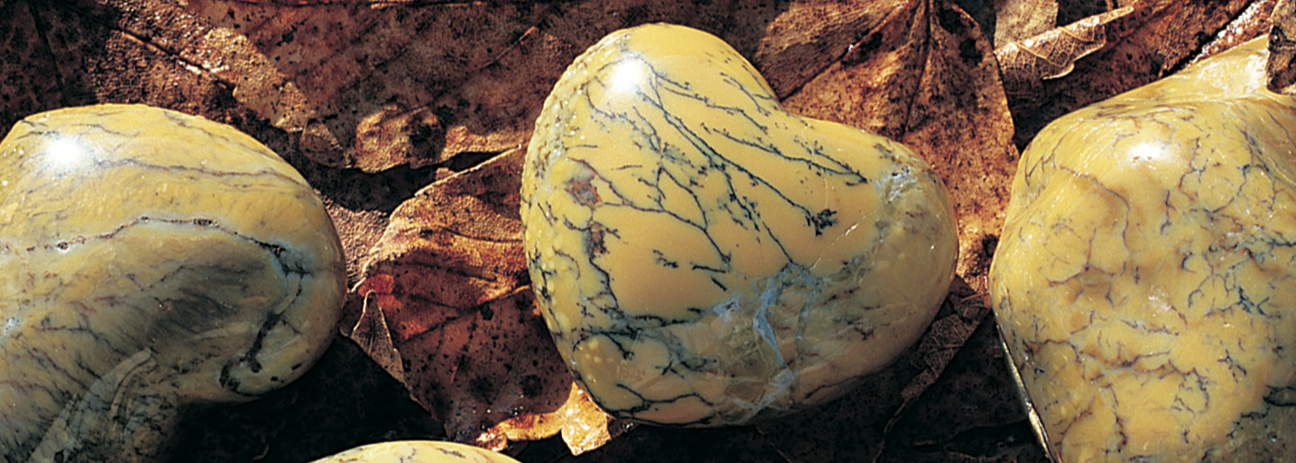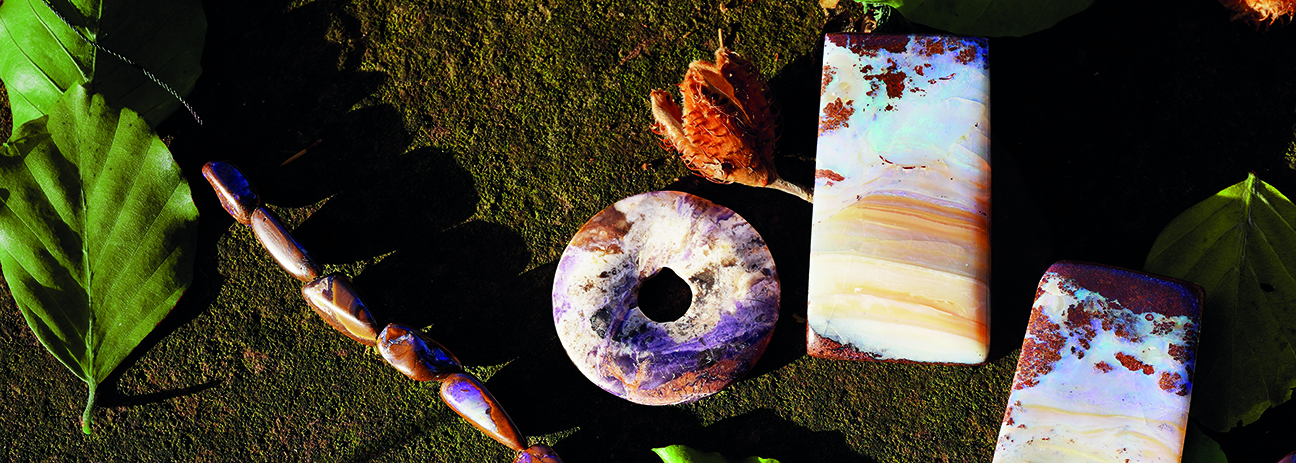
Opal - meaning, effect and application
The colorful, shimmering precious opal strengthens our joy in life. With the help of opal, the beautiful and positive aspects come to the fore, we can turn to new projects, exhilarated and completely anchored in the here and now. With creativity and full of imagination, we can set off for new shores.
Other representatives of the opal family support specific aspects - for example, the pink opal helps us to be more open-minded and the green Andean Opal helps us to be more flexible.
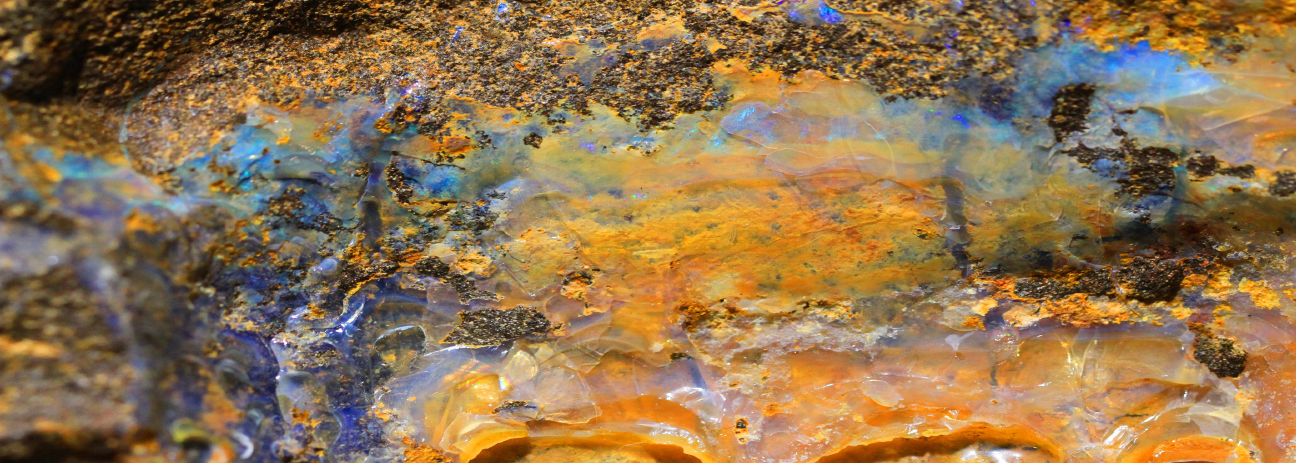
Mineralogical profile of opal
Formula:SiO2 *n H2O(hydrated silica gel)
Category: Oxides and hydroxides, quartz group
Occurrence: By solidification of silica gel of magmatic or sedimentary origin, localities in volcanites or sand and clay rocks
Color: colorless-milky, yellow, pink, orange, green, black to colorful iridescent due to impurities
Luster: Mother of Pearl, fat luster
Crystal system: amorphous
Mohs hardness: 5.5 to 6
Cleavability, Fracture: No cleavability; conchoidal, splintery
Localities, main supplier countries: Around 4500 opal localities are known worldwide. Precious opals from Australia are almost exclusively important for the trade. Common opals are traded from Brazil, Peru, Mexico, Tanzania and the USA. Fire Opals mostly come from Mexico. Since 2008, NASA has assumed that there is also opal on Mars.
Crystalhabit: Coatings on rock as well as veins in the rock; in precious opals, colourful iridescence (= opalescence)
Use: Opal is a classic gemstone that is one of the most popular gemstones worldwide. In gemstone healing, it is regarded as a stone of joie de vivre, which draws attention to the "colorful side of life" and intensifies perception and emotions. It is often used because it strengthens optimism and enthusiasm for life.
Astrology uses opal to support the spontaneity, zest for life and unconventionality of those born in Aquarius.
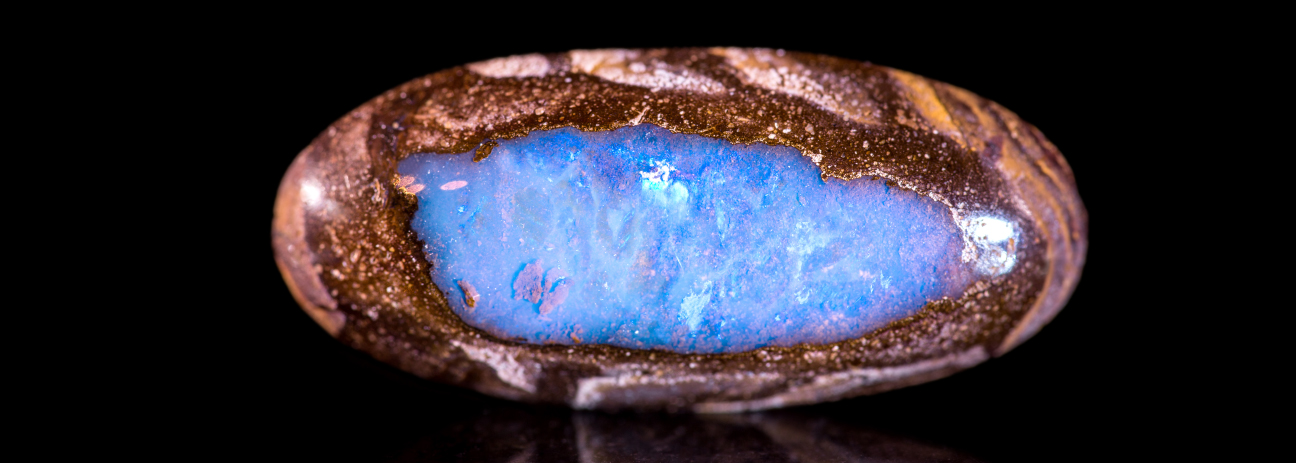
Name and varieties of opal
The term "opal" is derived from the Latin opalus or the Greek opallios; both mean "precious stone". An even older origin of the name could be the Sanskrit word upala ("noble stone"); however, there is no consensus among experts on this. Opals with vivid, colorful play of colors are called precious opals, opals without play of colors are summarized under the term common opals. Occasionally, the term semi-opal can also be found in the trade for common opals.
Different varieties of precious opal and common opal have been given their own names in the mineralogical world. In addition, some other minerals or rocks are referred to commercially as opal, although this is not mineralogically correct. The best known include
Andean Opal - pink or blue-green common opals from Peru
Atacama Opal - Opalite-Chrysocoll-Chalcedony mixture from Peru
Boulder Opal - colorful iridescent opal veins in brown matrix from Australia
Chrysopal (Prasopal) - green Andean Opal from Peru
Dendrite opal (moss opal) - common opal with dendrites
Fire Opal - red-orange opal in a beige-grey matrix from Mexico
Fluorite Opal Jasper - opalescent fluorite
Honey opal - yellow opal
Milk opal (glass opal) - colorless or white opal
Welo opal - light opal with a colorful play of colors from Ethiopia
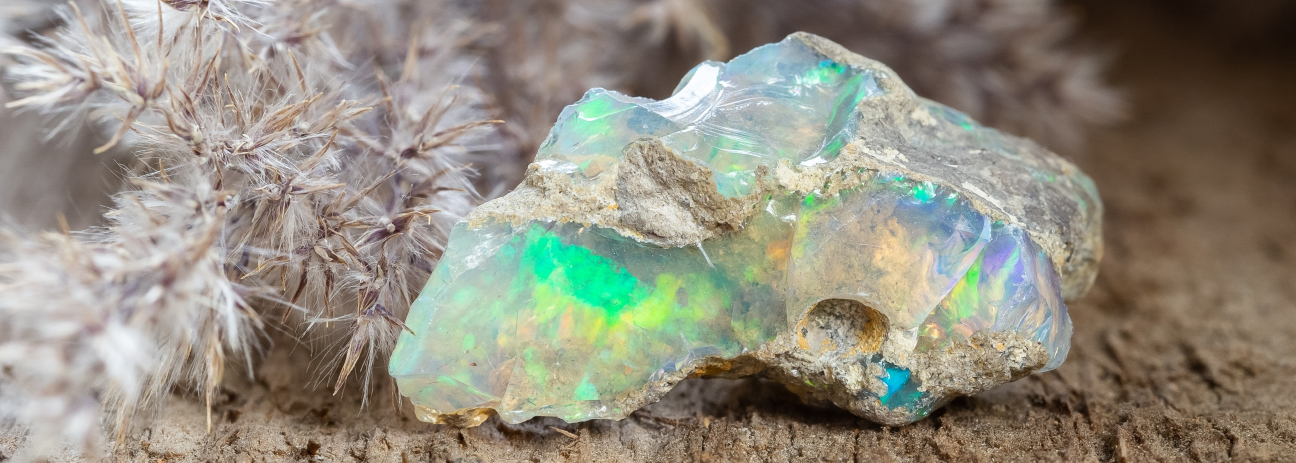
Angel skin opal, on the other hand, is a misleading name for the mineral palygorskite, which is similar to opal.
The term "opal glass" refers to an artificially produced material. With its shimmer, which is reminiscent of moonlight, the material has fascinated artisans for many decades. Opal glass was originally used for medical purposes, but is now used to make Art Nouveau lamps, angel figurines and other decorative objects.
Opal pendants, rings, Tumbled Stones and many other opal items from our wholesale range
Opal colors and opalization
When considering the different colors of opal, the basic color of the gemstone must be taken into account on the one hand and the play of colors on the other. The basic color depends on the composition of the rocks in which the opal was formed. The silica gel from which the opal is made has a milky white color, the color is caused by impurities. The most common colors are white, grey, black, blue, green and orange. The iridescent, colorful play of colors of precious opals Occurs due to reflections and overlapping (interference) of light rays inside the opal. The light is reflected by the numerous small beads of silica gel.
Opalescence is an optical effect of common opals in which the gemstone has a milky-bluish to pearly sheen.
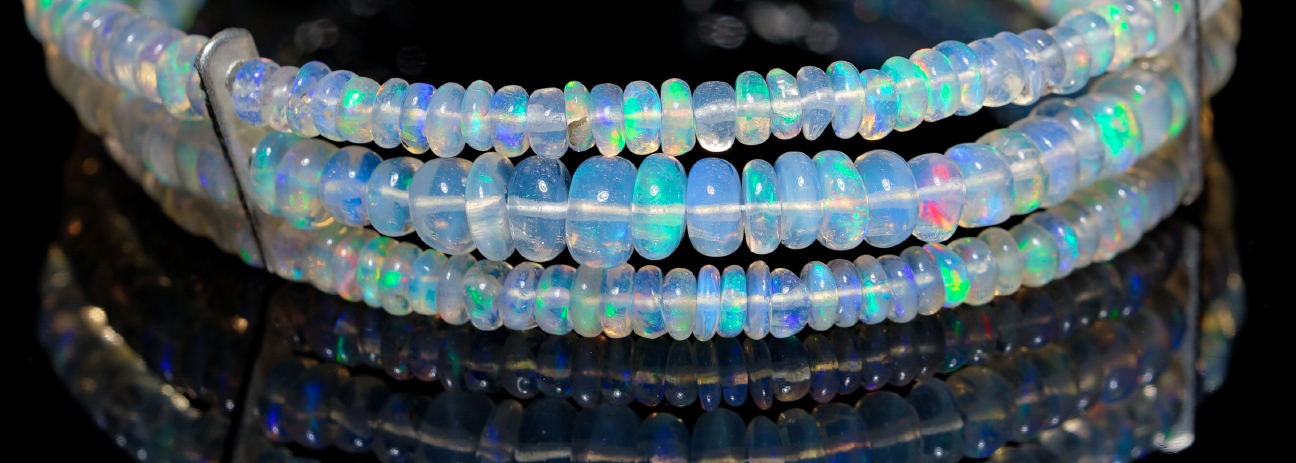
Historical use of opal
Pliny the Elder (23 - 79 AD) already wrote about opal in his well-known work "Naturalis historia": "It has a fire of its own, finer than that of carbunculus, it has the purple sparkle of amethyst and the sea green of emerald and a generally incredible mixture of light."
Scientists suspect that opals were already being mined in Dubnik in present-day Slovakia in Roman times, but there are no concrete records until the 15th century. Around 1670, the largest precious opal in Europe was found there by a flint prospector. At 594 grams, the opal is considered the most valuable gemstone in the imperial treasury and is exhibited in the Natural History Museum in Vienna. The name "Hungarian opal" for opals from Dubnik is explained by the fact that the area used to belong to Hungary.
Opal doublets and mosaic opals (composite opals)
As naturally grown opals with a beautiful play of color are usually quite expensive, so-called composite opals were first produced in Australia at the end of the 19th century. In the case of opal doublets , a thinly cut opal layer is glued onto a dark matrix (so-called potch). With good quality, a layer thickness of approx. 0.3 mm is sufficient to achieve a sparkling play of colors. The previously used term "layered opal" for these opals glued together has no longer been permitted since 1963.
If a slightly curved top piece of Rock Crystal, Glass or plastic is also glued onto the opal layer, this is referred to as an opal triplet.
A larger piece of opal glued together from several smaller pieces of opal is called a mosaic opal.
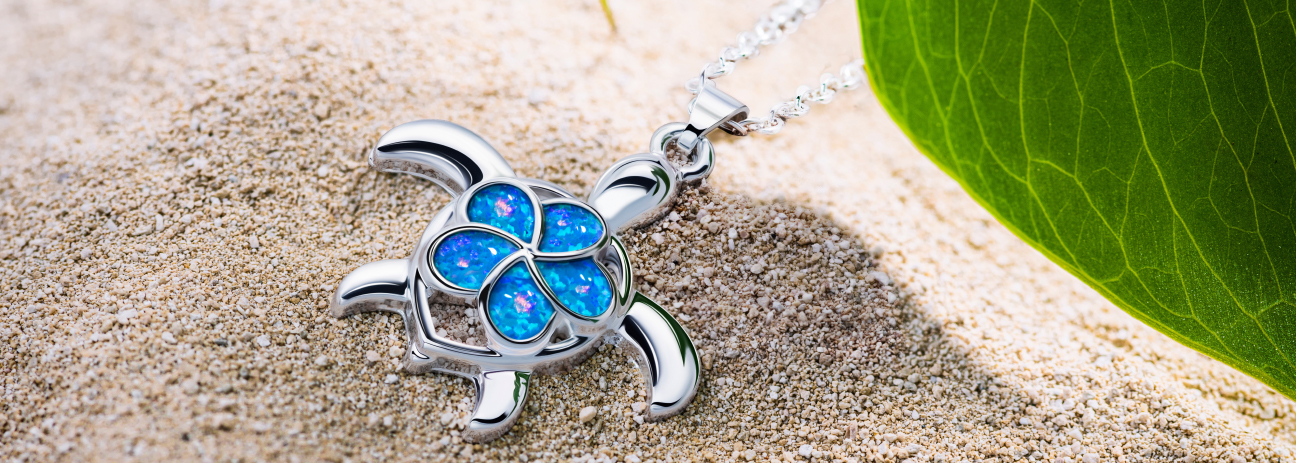
Opal and Opalite
Opalite translates as opal rock and refers to rocks that consist of or are permeated by opal-containing substances. The mostly sandy-clayey sediments with opal are called goldlace opalite or honey opalite due to their yellowish-light brown color. Due to the frequently occurring black manganese dendrites, the name moss opal or mosquito stone is also commonly used in the trade.
In gemstone healing, Opalite is important for promoting good contact with fellow human beings. It makes it easier to get involved in communities and to deal with other people's moods and feelings.
Opalite articles for resellers
